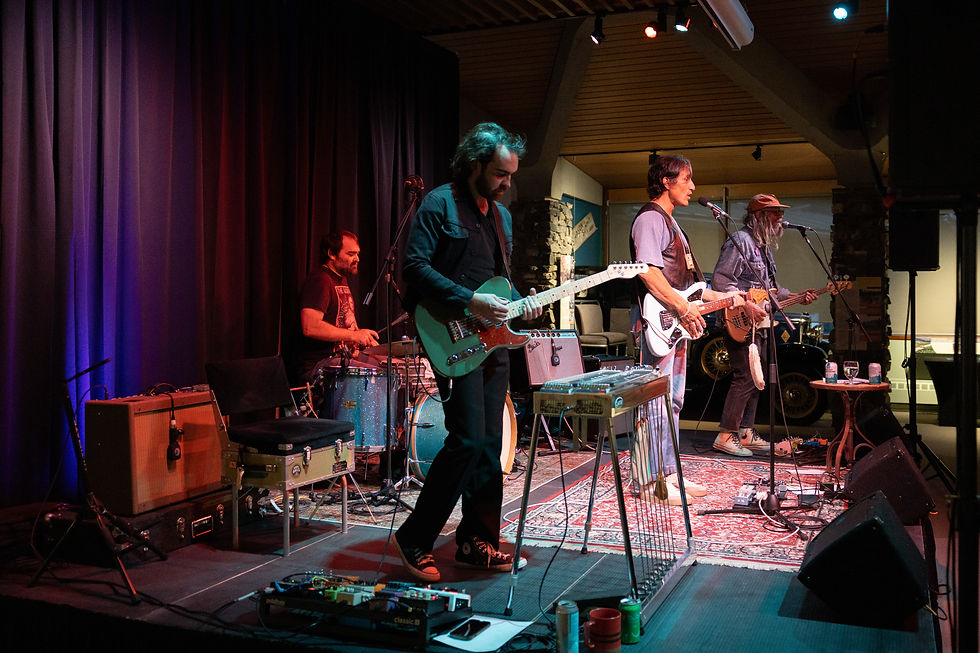Great Additions to the Art Collection!
- Jan 18, 2021
- 3 min read
The Whyte Museum’s art collection has been strengthened by the generous donation of several works that compliment our holdings and expand appreciation for artists who have worked in this area.
We are very grateful to Robyn L. Fulton for loaning a painting by Edward Roper for the exhibition Drawn to the West, and for recently donating the painting to the Whyte as part of its permanent collection. She will also be donating two other significant works in 2021:
THOMAS MOWER MARTIN, R. C. A. (1838 – 1934, CANADIAN)
The Sawback Mountains near Banff
C. 1900
watercolour
CHARLES JONES (C. J.) WAY, (1835 – 1919, CANADIAN)
The Fraser River at Yale, B. C.
c.1900
watercolour

EDWARD ROPER (1883 – 1909, BRITISH)
Revelstoke
1887
Oil on canvas
The painting Revelstoke extends the vision of the mountains westward and reflect the influence of the Canadian Pacific Railway in encouraging art of this region. It is a beautiful oil on canvas painted in 1887 by Edward Roper (1833 – 1909), an English painter, and illustrator who spent several months in British Columbia in 1887.
Roper documented and illustrated his experiences in a book By Track and Trail Through Canada. The Whyte is fortunate in having an original edition of this 1891 book. It makes for lively reading.
The train was stopped near Revelstoke for several hours, and Roper commented:
“...the most forlorn-looking collection of shacks and shanties, rotten tents, and booths of boughs and mud, we ever saw, planted on swampy ground, with stagnant water, black and fetid pools. Rank growths of skunk cabbages..."
Despite his impressions, Roper has eloquently captured the first stages of a growing mountain community.
Other important additions to the art collection last year include:
Author Katherine Govier has kindly donated a portfolio of 17 drawings by Dennis Burton (1933 –2013), one of which is in the book of poetry, Henry Kelsey, by Jon Whyte. Burton was a leading figure in the contemporary Canadian art scene in the 1970s, and taught at the Ontario College of Art, the New School of Art, the Banff School of Fine Arts, and the University of Lethbridge.
Joyce Davenall Turner estate donated 13 assorted works by John Davenall Turner, the founder, owner and manager of the first art gallery in Calgary, Canadian Art Galleries. Turner was also highly regarded as an oil painter of impressionist landscapes.
The Art Collection of the Whyte Museum
The Whyte Museum's art collection embodies the artistic spirit and vision of our founders Peter and Catharine. The collection includes over 10,000 items spanning the early 1800s to the present day. Featured are drawings, paintings, prints, and sculptures by celebrated local, regional, national, and international artists who have been captivated by the local landscapes.
The heart of the collection has over 2600 catalogued works by Peter and Catharine Whyte and represent their lifetime work. The childhood artistic attempts of Peter and Catharine, through their academic training at the School of the Museum of Fine Arts in Boston, inform the work they created as adult practicing artists.
The collection also includes paintings by the Canadian Pacific Railway era artists, the Group of Seven, summer art instructors such as Walter Phillips, H. G. Glyde, Holly Middleton, and Takao Tanabe. American painters Carl Rungius, Belmore Browne, Frederick Bosley, and Aldro Hibbard are well represented. The work of local artists Charlie Beil, Jimmy Simpson, Dan Hudson, Michael Cameron, and Karen Maiolo hang harmoniously with numerous others artists from different parts of the globe.
The Whyte collection has grown thoughtfully with selective purchases and generous donations. Acquisitions involve appraisals, review, condition reporting, insurance, storage, and ongoing conservation. We don’t have the space or resources to take everything that is offered, and a careful review is done of each piece. Factors such as the significance of the subject and artist to the area, enhancement to the existing collection, quality and condition of the work, and potential for future exhibitions are considered.



Comments